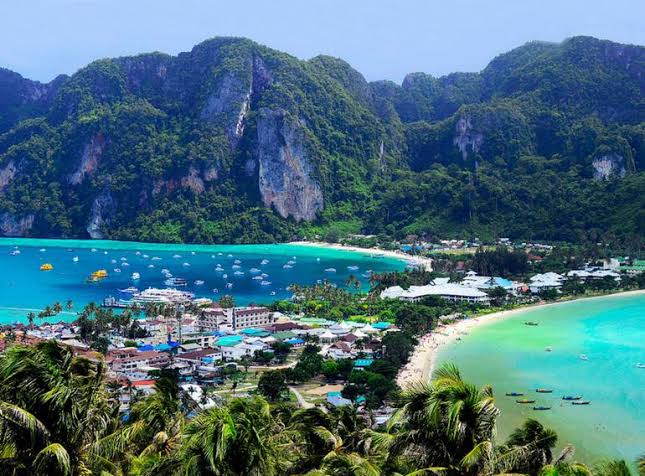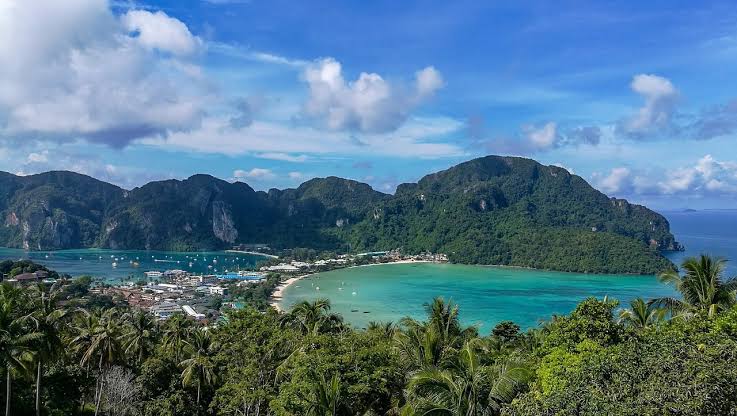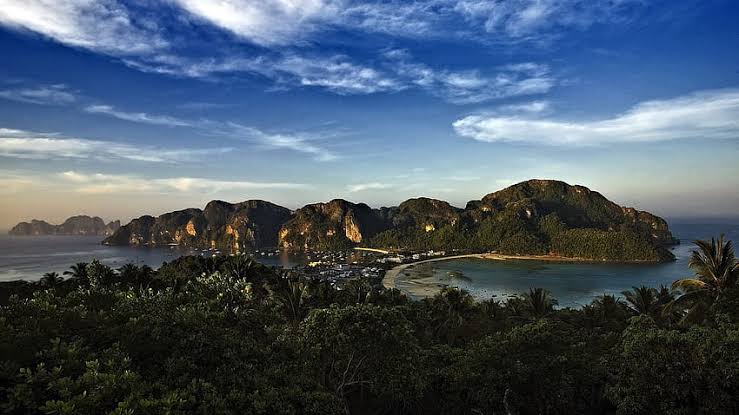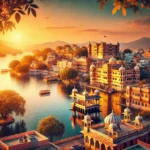Planning a trip to Andaman ? Learn why the monsoon is the worst time to visit Andaman due to heavy rainfall, disrupted activities, and travel issues. Find out when to plan your visit for a perfect vacation!
Table of Contents
Introduction:
The Andaman and Nicobar Islands are one of India’s top tourist destinations, known for their tropical beaches, crystal-clear waters, and vibrant marine life. But even paradise has its drawbacks—especially when you visit during the wrong season.
The worst time to visit Andaman is the monsoon season, which typically runs from May to September. During these months, the islands experience heavy rains, high humidity, and a risk of cyclones, making it difficult for travelers to enjoy outdoor activities and explore the islands.
In this blog, we’ll explore the top 9 reasons why the monsoon is the worst time to visit Andaman. We’ll also provide advice on the best time to visit for a hassle-free experience.
Whether you’re seeking adventure or relaxation, this guide will help you avoid the challenges of the monsoon season and plan the perfect Andaman trip.
1. Heavy Rainfall Ruins Outdoor Plans

The Andaman Islands experience torrential rains during the monsoon, making it nearly impossible to enjoy outdoor activities.
From May to September, the islands receive 2,000 to 3,000 mm of rainfall, with frequent downpours that last for hours or days at a time.
If you’re looking forward to visiting Andaman’s iconic spots like Radhanagar Beach or Elephant Beach, you’ll likely find them deserted or inaccessible during the monsoon.
Impact on Popular Activities:
- Sightseeing: Famous spots like Cellular Jail and Ross Island are difficult to explore during heavy rains.
- Beach Visits: Beaches become dangerous, and swimming or sunbathing is not advisable.
- Adventure Sports: Activities like trekking, snorkeling, and scuba diving are largely unavailable.
2. Cyclone Risks Make Travel Unsafe
Andaman faces a heightened risk of cyclones during the monsoon season, particularly between May and June. Cyclones can bring strong winds, heavy rainfall, and turbulent seas, which lead to dangerous conditions for tourists.
Not only do cyclones disrupt travel plans, but they can also pose significant safety risks.
In 2020, for instance, Cyclone Amphan swept across the Bay of Bengal, leading to travel bans and ferry cancellations in the region.
3. Disrupted Ferry and Flight Services

If you’re visiting Andaman, you’ll likely rely on ferry services to travel between the islands. However, during the monsoon season, ferry schedules are often disrupted due to rough seas. Many ferries, including those connecting Port Blair, Havelock Island, and Neil Island, are canceled or delayed.
The same applies to flight services. Strong winds and low visibility can lead to flight cancellations or delays, making it difficult to reach or leave Andaman during this period. This unpredictability can throw your entire travel itinerary into disarray.
4. Poor Underwater Visibility for Water Sports
If you’re planning to indulge in water sports like scuba diving, snorkeling, or sea walking in Andaman, the monsoon is the worst time to visit.
The heavy rains and turbulent seas reduce underwater visibility, making it impossible to appreciate the vibrant marine life. Additionally, the strong undercurrents during the monsoon make water sports dangerous, with many operators suspending activities altogether for safety reasons.
Popular diving spots like Elephant Beach and North Bay Island become inaccessible due to the unfavorable weather.
Guide to Andaman’s Water Sports – Learn more about the best times and places for scuba diving and snorkeling in Andaman.
5. Island Hopping is Limited or Unsafe

Andaman is best known for its variety of islands, each offering something unique to travelers. However, during the monsoon, island hopping becomes a challenge due to rough seas.
Ferries to islands like Havelock, Neil, and Ross Island are often canceled, leaving tourists stranded on the main island of Port Blair.
If you were hoping to explore Andaman’s various islands, the monsoon season is a major hindrance.
6. Hotel and Resort Closures or Limited Services
Many luxury resorts and hotels in Andaman either close or offer limited services during the monsoon season due to low tourist demand.
Resorts on islands like Havelock may reduce their staff, delay maintenance work, or suspend certain amenities. Additionally, due to heavy rains, there may be power cuts or water shortages, making your stay less comfortable than expected.
7. High Humidity and Unbearable Heat
The combination of heavy rainfall and high humidity makes the monsoon season uncomfortable for tourists. The humidity level in Andaman during the monsoon can soar to 85% or higher, making it feel much hotter than it is.
Tourists unaccustomed to tropical climates may find it difficult to enjoy outdoor activities, even when it isn’t raining.
8. Wildlife Exploration Becomes Difficult
Andaman is home to unique wildlife, including species like the Andaman Wood Pigeon and the Saltwater Crocodile. However, monsoon rains make wildlife exploration difficult, as muddy trails and reduced visibility hinder the experience.
Many wildlife sanctuaries, including Mahatma Gandhi Marine National Park and Saddle Peak National Park, remain closed or offer limited access during the rainy season.
9. Best Time to Visit Andaman for a Perfect Vacation
While the monsoon season is undeniably the worst time to visit Andaman, there’s a silver lining: the dry season is the perfect time to explore the islands. The best time to visit Andaman is from October to March, when the weather is dry and pleasant, and outdoor activities are in full swing.
During these months, you can enjoy scuba diving, snorkeling, beach visits, and island hopping without any weather-related disruptions. Resorts and hotels are fully operational, offering a comfortable and enjoyable stay for visitors.
Official Andaman Tourism Website – Get official updates on the weather, ferry schedules, and travel guidelines.
Q&A Section:
Q1: Is it really the worst time to visit Andaman during the monsoon?
Yes, the monsoon is considered the worst time to visit Andaman due to heavy rains, high humidity, and the risk of cyclones. Travel plans are often disrupted, and most outdoor and water activities are unavailable.
Q2: When is the best time to visit Andaman?
The best time to visit Andaman is from October to March, when the weather is dry, and you can fully enjoy outdoor activities like scuba diving, snorkeling, and sightseeing.
Q3: Can I still visit Andaman during the monsoon?
While it’s possible to visit Andaman during the monsoon, you should expect travel delays, limited activities, and uncomfortable weather. It’s not recommended unless you’re looking for a quiet, rainy getaway.
Q4: Are flights and ferries canceled during the monsoon?
Yes, flights and ferries are frequently canceled or delayed during the monsoon due to bad weather and rough seas. This can significantly impact your travel plans.
Q5: What is the cyclone risk in Andaman during the monsoon?
Cyclones are a significant risk in Andaman during the monsoon, especially between May and June. These storms can disrupt travel and pose safety risks for tourists.
Also Read : Intercity Travel in Andaman and Nicobar Islands: A Complete Guide ( 2024 )







